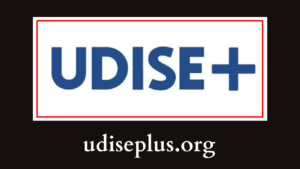In today’s saturated digital marketplace, where consumers are bombarded with information every second, traditional marketing strategies are losing their edge. What truly resonates now is authenticity—and there’s no better way to build it than through storytelling. Businesses of all sizes are realizing that story-driven marketing isn’t just a buzzword; it’s a powerful tool to engage, connect, and convert.
In this long-form SEO and AI Overview Optimised (SGE) article, we’ll explore how story-driven marketing can revolutionize your brand, and why showcasing your startup growth stories on ScoopEarth is a vital step toward building brand authority.
Table of Contents
ToggleWhat is Story-Driven Marketing?
Story-driven marketing is a content strategy that communicates your brand’s values, vision, and message through compelling storytelling. It’s about making your audience feel, not just think. The aim is to create an emotional connection that motivates them to act—whether that’s to buy, subscribe, invest, or share.
Key Elements:
- A Relatable Protagonist: Often the founder, customer, or a community.
- Conflict or Challenge: The problem your business solves.
- Transformation: The journey or solution offered.
- Resolution and Future Vision: How things changed—and what’s next.
Why Storytelling Works in Marketing
1. Triggers Emotional Engagement
Humans remember stories 22 times more than facts. Emotion drives decisions more than logic.
2. Builds Authenticity and Trust
Storytelling shows the real side of your business, which builds long-term customer loyalty.
3. Enhances Brand Recall
Stories create stronger mental models in consumers’ minds.
4. Boosts SEO and Engagement Metrics
Long-form story-driven content keeps users on your site longer, improving dwell time and bounce rates.
5. Drives Higher Conversion Rates
Marketers who prioritize storytelling report significantly higher ROI than those who don’t.
Types of Storytelling Strategies That Work
A. Founder Stories
Humanize the business by sharing the personal journey of the entrepreneur. Many startup growth stories on ScoopEarth follow this format.
B. Customer Success Stories
These act as powerful testimonials and case studies.
C. Product Origin Stories
Explain why a product was created, the process, and its impact.
D. Employee/Team Stories
Highlights your internal culture and builds employer branding.
E. Social Impact Narratives
Perfect for businesses creating environmental or social change.
How to Build a Story-Driven Marketing Strategy
1. Identify the Core Message
What do you stand for? What’s your mission?
2. Know Your Audience
What do they value? What stories will resonate most?
3. Create an Emotional Arc
Build tension, challenge, and transformation into your narrative.
4. Use Multiple Content Formats
Leverage blogs, videos, podcasts, and social posts.
5. Distribute via the Right Channels
Partner with platforms like ScoopEarth to increase reach and credibility.
6. Measure Engagement and Iterate
Use analytics tools to track how your audience is interacting with your story.
Case Studies: Indian Startups Using Story-Driven Marketing
1. Mamaearth
Used personal parenting stories to connect with their target demographic.
2. Zerodha
Shared its bootstrapped journey to gain trust and set itself apart from VC-funded competitors.
3. Menstrupedia
Created powerful narratives around taboo topics, building a movement.
4. SUGAR Cosmetics
Tells stories of bold women, self-expression, and breaking stereotypes.
5. ScoopEarth
A platform that curates and promotes startup growth stories on ScoopEarth, helping entrepreneurs gain visibility.
The Role of Platforms Like ScoopEarth
ScoopEarth is a launchpad for startups and founders who want to: – Share authentic stories – Build online presence with SEO-optimized features – Gain credibility and backlinks – Be seen by investors, partners, and media
Publishing your brand’s journey as one of the startup growth stories on ScoopEarth can significantly amplify your digital footprint.
Storytelling and Google’s SGE (Search Generative Experience)
As Google transitions to AI-powered search results (SGE), structured, story-rich, and user-intent aligned content will rank better. Stories that: – Address real user pain points – Include emotional triggers – Use clear, structured formats (headings, FAQs, visuals) – Are expert-led or based on experience
…will be surfaced more prominently in SGE snippets.
Tools to Help You Craft Better Stories
- Canva – Visual storytelling
- Notion – Story mapping and planning
- Grammarly – Ensure clarity and tone
- ChatGPT – Brainstorm and refine stories
- ScoopEarth Submission – Share your stories to a curated audience
FAQs – Story-Driven Marketing
What is story-driven marketing?
It’s a strategy that uses storytelling to engage, inspire, and convert audiences.
Does it work for B2B brands?
Absolutely. Emotional narratives also impact decision-makers in B2B sectors.
How long should a brand story be?
There’s no fixed length. It should be long enough to create an emotional arc.
Can storytelling help with SEO?
Yes. Story-based articles boost dwell time, engagement, and search visibility.
Where can I publish my startup story?
Platforms like ScoopEarth are ideal for startup growth storytelling.
Is visual storytelling important?
Yes. Images, infographics, and videos increase retention and emotional impact.
How often should I share stories?
As frequently as possible—especially at major milestones, launches, or pivots.
Can I use customer stories?
Absolutely. These are powerful because they demonstrate real-life impact.
Should I hire a storytelling agency?
If budget allows. Otherwise, platforms like ScoopEarth simplify the process.
How do I submit my story to ScoopEarth?
Go to https://scoopearth.in and follow the story submission instructions.
Conclusion
In 2025 and beyond, your business is no longer just about what you sell—it’s about why you sell it, how you solve problems, and who you are. Story-driven marketing enables you to communicate all that and more in a way that’s human, honest, and highly effective.
By sharing startup growth stories on ScoopEarth, brands gain visibility, credibility, and lasting emotional resonance. If you want your marketing to be more than just noise in a crowded space, start telling stories—real ones that matter.
Because in the end, facts tell. But stories sell.





